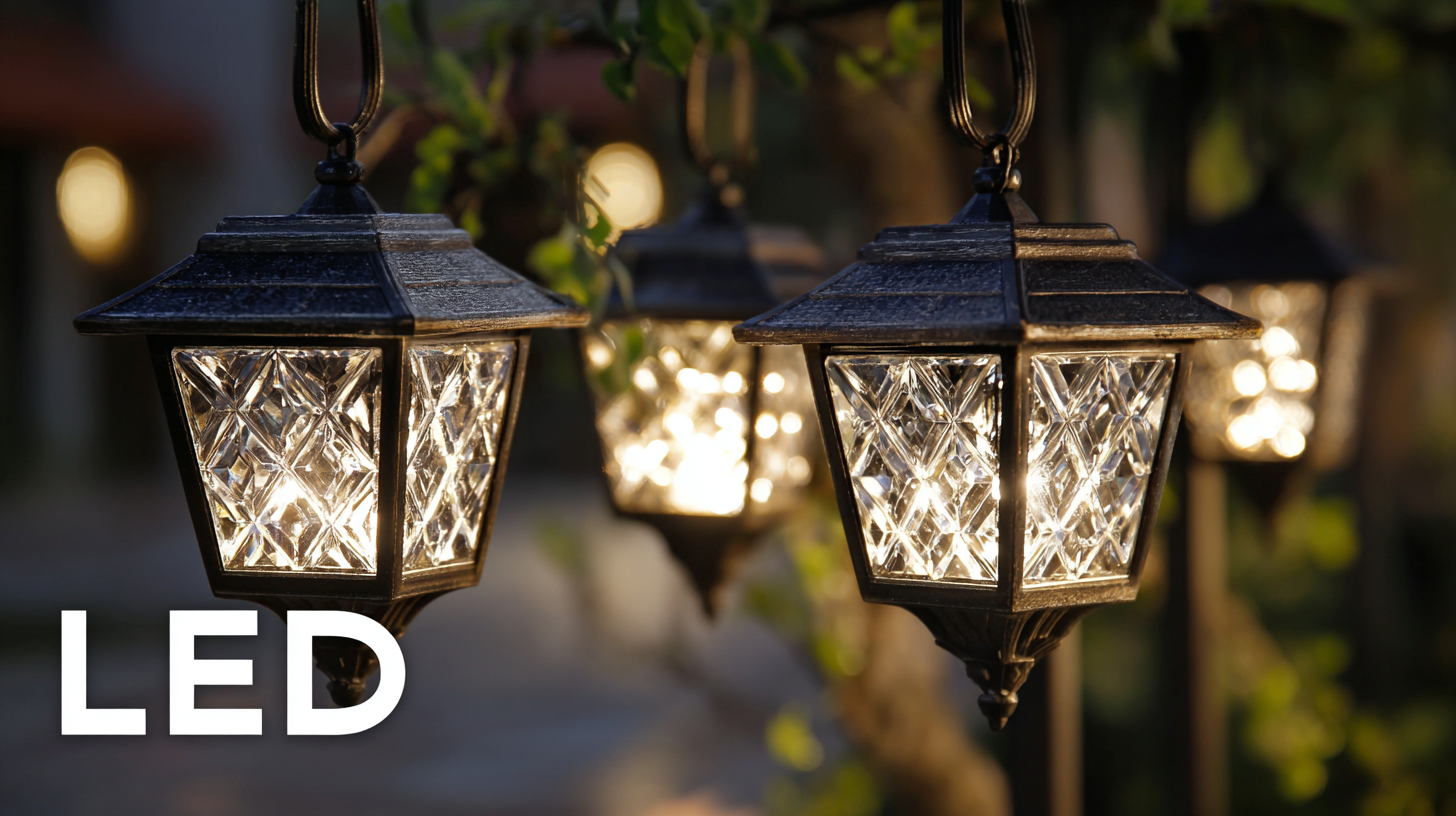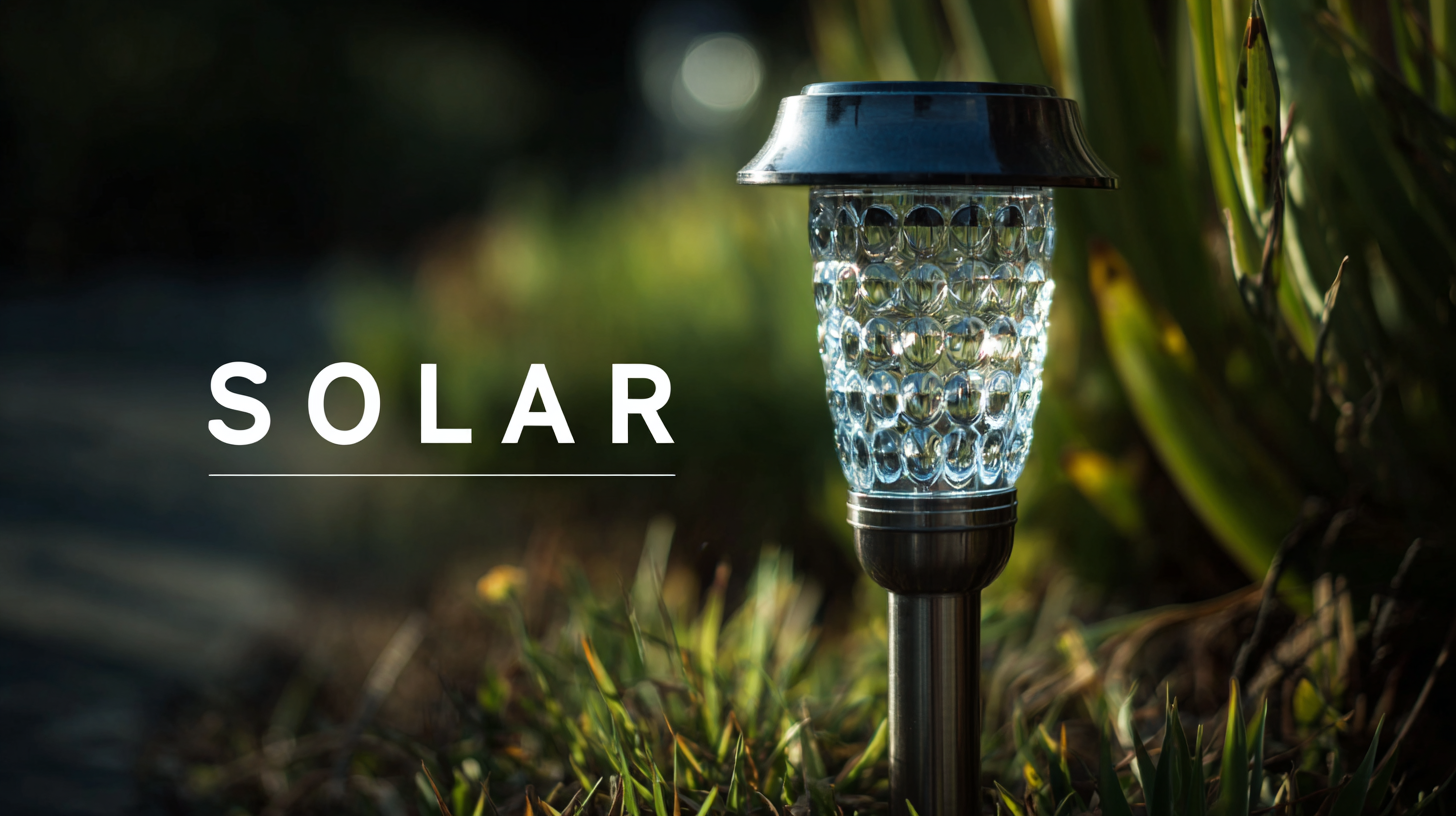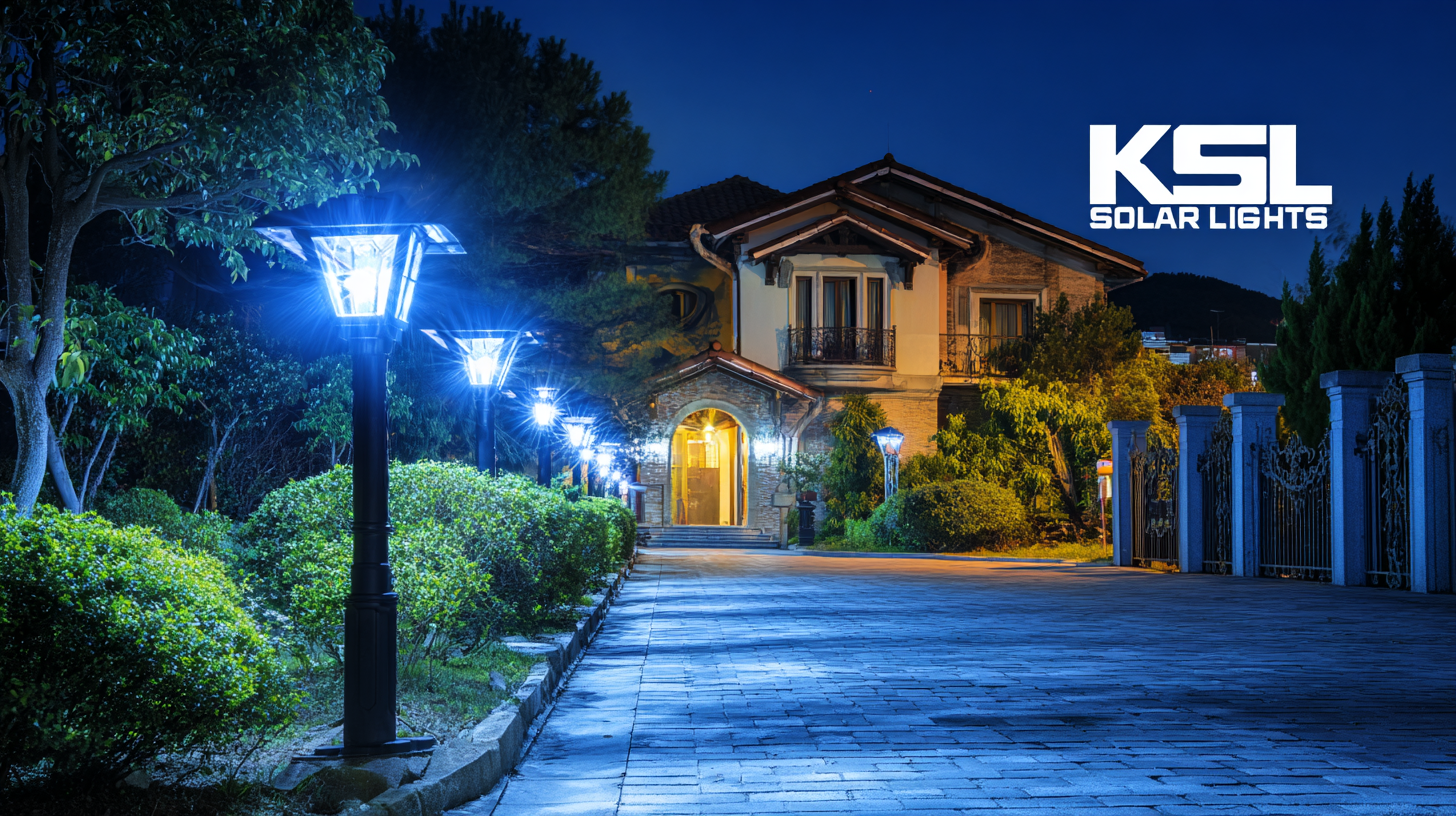Exploring Real World Applications of Best Led Solar Lights and Addressing Common Industry Issues
As global awareness of sustainable energy solutions continues to rise, the demand for effective and eco-friendly lighting options has surged, particularly in the realm of Led Solar Lights. According to a recent report by the International Renewable Energy Agency (IRENA), the solar energy market is expected to grow at a compound annual growth rate (CAGR) of over 20% through 2025, prompting significant advancements in solar lighting technologies. Led Solar Lights have emerged as a case study in innovative design, efficiency, and application versatility, catering to a wide range of environments from urban landscapes to rural areas. However, despite their growing popularity, industry challenges such as product quality assurance and technological integration remain prevalent. This blog aims to explore real-world applications of the best Led Solar Lights while addressing these common industry issues, providing valuable insights for consumers and manufacturers alike.

Innovative Uses of LED Solar Lights in Urban Landscaping and Public Spaces
As cities continue to evolve, the integration of LED solar lights into urban landscaping and public spaces is revolutionizing how we illuminate our surroundings. According to a report by the International Renewable Energy Agency (IRENA), the global market for solar lighting is projected to reach $7 billion by 2025, driven largely by the adoption of LED technology. These lights not only reduce energy consumption but also enhance the aesthetic appeal of parks, sidewalks, and public squares, creating safer and more inviting environments for residents and visitors alike.
In urban settings, innovative installations of LED solar lights have been proven to lower crime rates and increase foot traffic after dark. A study from the U.S. Department of Justice found that well-lit public spaces discourage criminal activity by 30%. Cities like San Diego have embraced this technology, employing solar-powered LED lights in community parks and along walking trails, providing both functionality and sustainability. The ability to harness solar energy not only helps in reducing dependence on grid electricity but also significantly cuts down on maintenance costs, making it a win-win for urban planners and local governments.
Evaluating Energy Savings: The Efficiency of LED vs. Traditional Solar Lights
When considering energy-saving solutions in outdoor lighting, the comparison between LED solar lights and traditional solar lights becomes crucial. LED solar lights have surged in popularity, largely due to their superior efficiency and longevity. While traditional solar lights use incandescent bulbs that consume more energy and have a shorter lifespan, LED technology offers a remarkable leap forward. Not only do LEDs produce a brighter light with lower power consumption, but they also convert energy more efficiently, resulting in significant cost savings over time.
Moreover, the initial investment in LED solar lights can seem higher, but the long-term benefits far outweigh these costs. With the ability to last up to 25,000 hours, LED solar lights reduce the frequency of replacements and maintenance. This means that homeowners and businesses can enjoy reduced electricity bills and less environmental impact through lower energy consumption. Additionally, as the manufacturing process for LED technology continues to evolve, we can expect ongoing improvements in quality and reductions in price, making them an even more attractive option for eco-conscious consumers.
Energy Savings Comparison: LED Solar Lights vs. Traditional Solar Lights
Addressing Common Issues: Lifespan and Durability Challenges in Solar Lighting
The longevity and durability of solar lights remain significant challenges within the industry, often limiting their widespread adoption in various applications. According to a 2021 report by the International Renewable Energy Agency (IRENA), the average lifespan of conventional solar LEDs ranges between 5 to 10 years, under optimal conditions. However, environmental factors such as temperature fluctuations, humidity, and exposure to UV rays can shorten this lifespan dramatically. Addressing these variables is crucial, as a robust product can instill confidence in consumers and municipalities alike, encouraging investment in solar lighting solutions.

Furthermore, durability issues typically stem from inadequate material selection and manufacturing processes. A 2020 study conducted by the Solar Energy Industries Association (SEIA) indicated that products utilizing high-quality polycarbonate materials showed a 30% increase in resistance to impact and weather conditions compared to lower-end alternatives. This emphasizes the importance of innovation in materials engineering to enhance the resilience of solar lights, directly impacting their effectiveness and reputation in real-world applications. By tackling these longevity and durability challenges, the industry can pave the way for more reliable solar lighting solutions that can thrive in various environments and meet the growing demand for sustainable energy solutions.
Impact of Weather Conditions on Solar Light Performance and Solutions
Weather conditions significantly influence the performance of solar lights, impacting their efficiency and longevity. Factors such as sunlight exposure, humidity, and temperature fluctuations can alter how well these lights charge during the day and illuminate at night. For instance, prolonged cloudy days may lead to insufficient energy absorption, resulting in dimmer light output. Similarly, extreme temperatures can affect battery performance, causing shorter operational times.
To optimize the effectiveness of solar lights regardless of weather conditions, consider installing them in locations that maximize sun exposure, avoiding areas shaded by trees or buildings. Regular maintenance, such as cleaning the solar panel surfaces, can also enhance performance by ensuring that dirt and debris do not block sunlight.
Additionally, investing in high-quality solar lights with robust battery systems designed to endure various weather conditions can make a significant difference. Look for products equipped with adaptive settings that can adjust lighting based on available solar energy. This way, even during less favorable weather, your solar lights can continue to provide reliable illumination.
Exploring Real World Applications of Best Led Solar Lights and Addressing Common Industry Issues
| Application | Common Issues | Impact of Weather | Solutions |
|---|---|---|---|
| Street Lighting | Inconsistent brightness | Heavy rain can reduce efficiency | Upgrade to higher capacity batteries |
| Garden Lighting | Short operational time | Overcast days decrease charging | Add solar panel shields for better exposure |
| Security Lighting | Delayed response time | Snow accumulation blocks light | Regular maintenance and clearing |
| Pathway Lighting | Uneven light distribution | Wind can tilt and misalign lights | Secure fixtures with anchors |
| Parking Lot Lighting | High replacement cost | Humidity affects battery life | Use weather-resistant components |
Exploring Regulatory Standards and Safety Issues in Solar Lighting Installations
As the adoption of solar lighting systems accelerates, ensuring compliance with regulatory standards and addressing safety issues has become paramount. According to a recent report from the International Renewable Energy Agency (IRENA), the global market for solar lighting is projected to grow at a CAGR of 20% through 2025, driven by increasing energy demands and a push towards sustainable solutions. However, this rapid growth brings forth critical regulatory challenges that manufacturers and installers must navigate to ensure they meet local and international safety standards.

One of the key safety concerns in solar lighting installations is the quality and durability of components used, particularly in regions facing extreme weather conditions. The American National Standards Institute (ANSI) has developed guidelines to facilitate safer installations and promote the use of high-quality materials. For instance, a study by the Solar Energy Industries Association (SEIA) revealed that installations that adhered to ANSI standards reported a 30% reduction in malfunction rates, thereby increasing consumer confidence and overall satisfaction in solar lighting solutions. As the industry evolves, a deeper understanding of these regulations is crucial for stakeholders aiming to harness the full potential of solar technology while ensuring safety and reliability.
